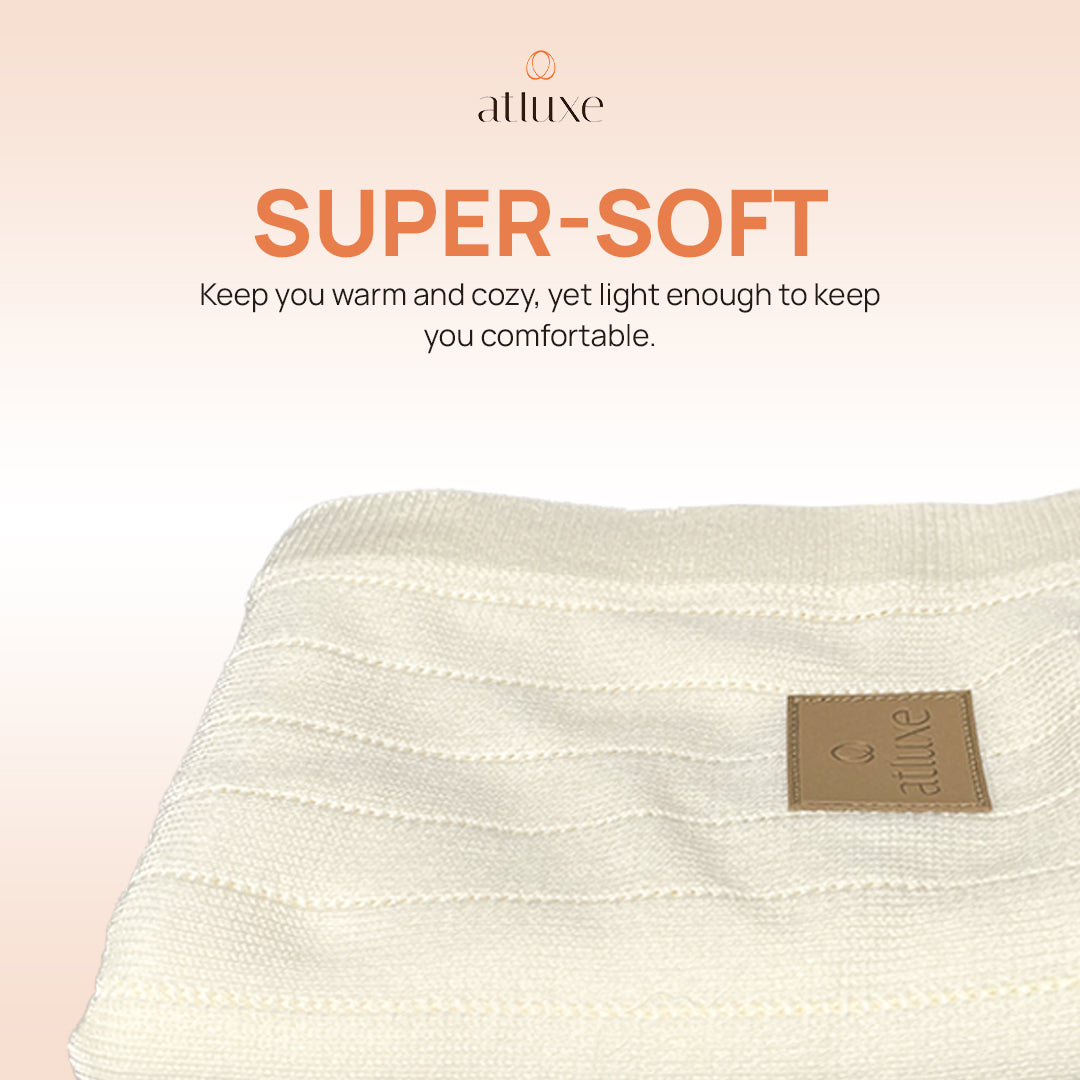Can Swaddles Alleviate Colic Symptoms? Find Out!
Welcome, parents! Are you struggling to soothe your colicky baby and provide them with much-needed rest? Have you heard about the magical powers of swaddling but wonder if it's just a myth or actually effective? Today, I'm here to tackle this burning question: Can swaddles help alleviate colic symptoms and promote better sleep for both babies and parents?

In this article, we will dive deep into the world of swaddling and its potential benefits for colicky infants. We'll explore the science behind this age-old practice and understand how swaddles create a soothing environment that can calm your baby and ease colic symptoms. So, let's get started on this fascinating journey to uncover the truth about swaddling and its impact on infant sleep!
Key Takeaways:
- Swaddling is a traditional practice that involves wrapping babies snugly in a blanket or cloth.
- Swaddling can create a secure and cozy environment that mimics the womb, helping to calm and soothe babies.
- Proper swaddling techniques can promote better sleep for both babies and parents.
- It is important to prioritize safe sleep practices and consult with a pediatrician for personalized advice.
- While swaddling may not work for every baby, exploring alternative soothing techniques can help alleviate colic symptoms.
Understanding Colic in Babies
Before we delve into the topic, let's first understand what colic is and how it affects babies. Colic refers to severe, often fluctuating pain in the abdomen, causing a baby to cry excessively and seemingly without reason.
Colic is a common condition that affects many infants, typically starting within the first few weeks of life and resolving on its own by the time the baby reaches three to four months of age. The exact cause of colic is still unknown, but it is believed to be related to digestive issues or factors such as gas, overstimulation, or immature nervous system.
Babies with colic often display the following symptoms:
- Intense, inconsolable crying episodes lasting for hours
- Episodes occurring at around the same time every day
- Crying that starts suddenly and without an apparent reason
- Clenching of fists and arching of the back
- Difficulty comforting or soothing the baby
| Symptoms of Colic | Factors |
|---|---|
| Intense, inconsolable crying episodes lasting for hours | Gas, digestive issues |
| Episodes occurring at around the same time every day | Overstimulation |
| Crying that starts suddenly and without an apparent reason | Immature nervous system |
| Clenching of fists and arching of the back | |
| Difficulty comforting or soothing the baby |
It's important to note that colic is different from the typical crying and fussiness that babies experience. While fussy periods are normal, colic is characterized by prolonged and intense crying that can be distressing for both the baby and their caregivers.
Understanding colic and its symptoms is the first step to finding effective ways to soothe and calm your colicky baby. In the next section, we will explore the benefits of swaddling and how it can help provide relief for babies with colic.
The Benefits of Swaddling
Swaddling is a traditional practice of wrapping babies snugly in a blanket or cloth. It has been known to calm and soothe babies, promoting better sleep and creating a womb-like environment that can help ease colic symptoms.
When a baby is swaddled, it creates a sense of security and comfort, mimicking the cozy feeling they experienced in the womb. This gentle pressure and containment can help calm your baby by reducing their startle reflex and providing a soothing environment for sleep.
Swaddling has been found to be particularly effective in soothing newborns and young infants. The snug wrap of a swaddle can help them feel grounded and secure, promoting a sense of calmness and relaxation. This can be especially beneficial for babies with colic who may cry excessively and have difficulty settling down.
The Soothing Power of Swaddling
The act of swaddling not only promotes a sense of calmness but also helps regulate a baby's body temperature, keeping them warm and comfortable. By swaddling your baby, you create a cocoon-like environment that can foster better sleep patterns and prevent frequent wake-ups.
Furthermore, swaddling can help soothe your crying baby by providing a gentle hug-like sensation against their sensitive skin. The pressure exerted by the swaddle can release endorphins, which are natural feel-good hormones, promoting relaxation and reducing stress levels in your little one.
The Benefits of Swaddling for Baby Sleep
Swaddling can significantly improve sleep quality for both babies and parents. When your baby is swaddled, it helps prevent random arm and leg movements that can startle them awake. This can lead to longer and more restful sleep periods for your little one, allowing them to wake up feeling more refreshed and content.
In addition, swaddling can help regulate your baby's sleep-wake cycle by creating a cozy and comforting environment. When your baby feels calm and secure, they are more likely to self-soothe and fall back asleep on their own if they wake up during the night. This can promote healthy sleep habits and reduce nighttime awakenings.
| Benefits of Swaddling |
|---|
| Promotes better sleep |
| Creates a sense of security |
| Helps ease colic symptoms |
| Reduces startle reflex |
| Regulates body temperature |
| Promotes self-soothing |
How Swaddling Works
Swaddling is a tried and true method of comforting babies and promoting better sleep. By wrapping your baby snugly in a swaddling blanket, you can recreate the secure and cozy feeling they experienced in the womb. This technique has several benefits that contribute to a peaceful slumber for your little one.
When you swaddle your baby, you provide them with a sense of warmth and security. This helps reduce their startle reflex, also known as the Moro reflex, which can often wake them up abruptly. Swaddling keeps their arms and legs snugly wrapped, preventing any sudden movements that can disturb their sleep.
In addition, swaddling can help your baby feel safe and comfortable, mimicking the closeness they felt in the womb. It can also create a soothing environment that promotes relaxation and calmness, which can be especially helpful for babies who experience colic or have difficulty settling down.
It's important to note that swaddling should be done correctly to ensure your baby's safety. The swaddling blanket should be snug but not too tight, allowing for proper circulation and movement of the hips and legs. Always monitor your baby while they are swaddled to prevent overheating and ensure they can breathe comfortably.
By swaddling your baby, you create a nurturing environment that encourages peaceful sleep and a contented baby. It's a simple yet effective technique that has been used for generations to help babies feel secure and calm.

Testimonials
"Swaddling my baby has been a game-changer! It's incredible how wrapping him snugly in a swaddling blanket helps him sleep peacefully throughout the night." - Sarah, proud mother
"I love how swaddling instantly calms my fussy baby. It's amazing to see the difference it makes in her sleep patterns. Highly recommend!" - Emily, happy parent
Swaddle Your Baby Like a Pro
If you're new to swaddling or want to brush up on your technique, here are some helpful tips:
- Choose the right swaddling blanket – Look for a lightweight and breathable blanket specifically designed for swaddling.
- Start with a square blanket – Fold the blanket into a triangle shape to create a pocket for your baby.
- Place your baby in the center – Lay your baby on their back with their shoulders aligned with the top edge of the blanket.
- Secure the arms – Take one corner of the blanket and bring it across your baby's body, tucking it under their opposite arm. Repeat with the other corner.
- Wrap the bottom – Fold the bottom of the blanket up and over your baby's legs, tucking it snugly underneath their body.
- Ensure proper hip positioning – Your baby's legs should be able to move freely and remain in a natural frog-like position.
Comparison of Swaddling Techniques
| Swaddling Technique | Description | Difficulty Level | Effectiveness |
|---|---|---|---|
| Classic Swaddle | A traditional technique that involves wrapping the blanket snugly around the baby's body, securing the arms and legs. | Easy | High |
| Hip-Friendly Swaddle | A modified technique that allows for proper hip positioning, with the legs in a natural frog-like position. | Moderate | High |
| Arms-Free Swaddle | A technique that allows for swaddling the baby's lower body while leaving the arms free for self-soothing. | Moderate | Medium |
Ensuring Safe Sleep with Swaddles
While swaddling can be beneficial in promoting baby's sleep and soothing colic symptoms, it is crucial to prioritize safe sleep practices to protect your little one. By following these guidelines, you can create a secure sleep environment and reduce the risk of Sudden Infant Death Syndrome (SIDS) and suffocation:
-
Always put your baby to sleep on their back to reduce the risk of SIDS. This position has been proven to be the safest for infants and helps maintain clear airways.
-
Avoid using loose blankets or excess fabric when swaddling your baby. These pose a suffocation hazard and can increase the risk of SIDS. Instead, opt for specially designed swaddling blankets or sleep sacks that provide a snug but breathable wrap.
-
Keep the sleeping area clear of pillows, stuffed animals, and other soft bedding items that can pose a suffocation risk. A firm and flat mattress with a fitted sheet is all your baby needs for a safe sleep surface.
-
Ensure that the room is at a comfortable temperature for your baby. Overheating can increase the risk of SIDS, so dress your baby in light clothing and use lightweight blankets or adjust the room temperature accordingly.
By implementing these safe sleep practices, you can provide a secure and comfortable sleep environment for your baby while enjoying the benefits of swaddling.
Safe Sleep Checklist
| Safe Sleep Practices | Status |
|---|---|
| Put baby to sleep on their back | ✔️ |
| Avoid loose blankets or excess fabric | ✔️ |
| Keep the sleeping area clear of suffocation hazards | ✔️ |
| Maintain a comfortable room temperature | ✔️ |
Swaddling Techniques and Tips
Swaddling your baby correctly is essential to provide comfort and security. By learning proper techniques and following the guidelines provided by pediatricians, you can ensure a secure and comfortable swaddle for your little one. Here are some tips to help you swaddle a baby effectively:
- Choose the right swaddling blanket: Opt for a lightweight and breathable blanket that allows proper airflow to keep your baby cool and comfortable.
- Positioning is key: Lay the swaddle blanket on a flat surface, ensuring it forms a diamond shape. Fold the top corner down and place your baby's shoulders level with the fold.
- Secure the arms: Gently hold your baby's arms against their body and bring one side of the swaddle blanket across their chest.
- Wrap snugly: Bring the other side of the swaddle blanket across your baby's chest and tuck it under the opposite side. Make sure the swaddle is snug but not too tight, allowing your baby to move their hips and legs freely while keeping their arms secure.
- The baby burrito: An alternative method is the baby burrito technique. Place your baby on the swaddle blanket with their head slightly above the fold. Fold one side of the swaddle blanket over your baby's body, tucking it under their back. Then, fold the bottom of the swaddle blanket up and secure it with the remaining side.
- Check for signs of discomfort: Ensure your baby's airways are clear and that the swaddle is not too tight around their chest. Your baby should be able to breathe easily and comfortably while swaddled.
Remember, swaddling can help your baby feel safe and calm, promoting better sleep and reducing colic symptoms. However, always monitor your baby while swaddled to ensure their safety.
My Favorite Swaddling Technique: The Baby Burrito
"As a parent, I found the baby burrito swaddling technique to be the most effective for keeping my little one snug and secure. It provided a sense of comfort and helped my baby sleep peacefully through the night." - Sarah Johnson, mother of two
When to Start and Stop Swaddling
When it comes to swaddling, timing is essential. You can begin swaddling your baby right from birth to provide them with a sense of security and comfort. Swaddling helps recreate the cozy environment of the womb, soothing your baby and promoting better sleep.
However, it's important to keep an eye out for signs that indicate it's time to stop swaddling. One such sign is when your baby starts to roll over. Rolling is a developmental milestone that typically occurs between 4 to 6 months of age. Once your baby begins to roll, it's crucial to transition them out of swaddling to ensure their safety.
As babies develop the ability to roll, swaddling can restrict their movement and increase the risk of suffocation. Rolling over while swaddled can also disturb their natural sleep patterns, leading to discomfort and potentially hindering their development.
If you notice that your baby is showing signs of wanting to roll, such as attempting to turn over during tummy time or stretching their legs while swaddled, it's time to stop swaddling. Introducing alternative sleep arrangements, such as a sleep sack or a transitional swaddle, can be a safer option.
Remember, every baby is unique, and it's important to closely monitor their development and adapt your swaddling practices accordingly. By being mindful of your baby's milestones and adjusting their sleep environment, you can create a safe and comfortable space that promotes their well-being.
Below is a table summarizing the signs that indicate the need to stop swaddling:
| Signs that indicate the need to stop swaddling |
|---|
| Baby begins to roll over |
| Baby shows signs of attempting to turn over during tummy time |
| Baby stretches their legs while swaddled |
What to do after stopping swaddling?
After you stop swaddling your baby, it's important to help them adjust to their new sleep routine. Encourage them to develop their self-soothing skills by allowing them to explore different sleep positions and providing a safe sleep environment. Remember to always follow safe sleep guidelines, ensuring that your baby sleeps on their back to reduce the risk of Sudden Infant Death Syndrome (SIDS). Gradually transitioning to a sleep sack or a wearable blanket can provide a sense of comfort without restricting your baby's movement.
Other Techniques for Soothing Colicky Babies
While swaddling can be helpful, it may not work for every baby. It's important to remember that every baby is different, and alternative soothing techniques may be needed. Here are some other techniques that can help soothe colicky babies:
- Let your baby cry it out: Sometimes, allowing your baby to cry for a short period can help release pent-up tension and relieve some pressure. Of course, it's crucial to ensure their safety and comfort while doing so.
- Use white noise: White noise, such as the sound of a fan, vacuum cleaner, or a white noise machine, can create a calming environment and help drown out other noises that may be stimulating for your baby.
- Relieve some pressure: Gently massaging your baby's tummy in a clockwise motion can help alleviate gas and digestive discomfort. You can also try different soothing techniques like bicycle legs or tummy time to provide relief.
Remember, finding the right technique to soothe your colicky baby may require some trial and error. What works for one baby may not work for another. Be patient, and keep experimenting until you find a method that helps your little one find comfort and relief.
Hip-Healthy Swaddling
When it comes to swaddling your baby, it's important to prioritize their hip health. Improper swaddling techniques can increase the risk of hip dysplasia, a condition where the hip joint is not properly aligned. To ensure your baby's hip development is not compromised, follow these hip-healthy swaddling tips:
- Lay your baby with their hips comfortably positioned: When swaddling your baby, make sure their hips are positioned in a way that allows for proper hip movement. Avoid tightly wrapping their legs straight as this can restrict their natural hip development.
- Leave room for hip flexion and movement: A hip-healthy swaddle should allow your baby to flex and move their hips comfortably. This means leaving enough space for their legs to bend at the hips. Overly restricting hip movement can increase the risk of hip dysplasia.
- Choose swaddling products with a "hip-healthy" label: Look for swaddling blankets or wraps that are specifically designed to promote hip health. These products are usually made with fabric that allows for proper hip movement and development.
By practicing hip-healthy swaddling, you can rest assured that you are providing the best care for your baby's hip development. Remember, always prioritize your baby's comfort and safety when swaddling.
The Role of Swaddles in Promoting Sleep
Swaddling helps to create a secure and comforting environment for your baby, leading to better sleep and longer, more restful nights. By wrapping your little one snugly in a swaddle, you can help them feel safe and protected, just like they were in the womb.
Swaddling can help your baby sleep better by reducing the startle reflex, which can often wake them up during sleep. The gentle pressure of a swaddle can also provide a soothing effect, promoting a calm and relaxed state that encourages longer sleep bouts.
When your baby sleeps better, you'll notice that they wake up less often throughout the night, allowing them and you to get the much-needed rest you deserve. Swaddling can help establish healthy sleep patterns and contribute to a happier and healthier baby overall.
So, if you're looking for ways to help your baby sleep longer and more peacefully, consider incorporating swaddles into your bedtime routine. The benefits of swaddling are not only limited to better sleep but also extend to soothing your baby and helping them feel secure in their new world.

Expert Advice on Swaddling and Colic
When it comes to swaddling and colic, seeking advice from a pediatrician is invaluable. As a trusted healthcare professional specializing in children's health, your pediatrician can offer personalized guidance tailored to your baby's unique needs. Whether your little one is experiencing colic symptoms or you have questions about swaddling, consulting with a pediatrician is always a wise choice.
Pediatricians are well-equipped to assess your baby's condition and provide expert advice on managing colic. They can help determine if your baby's excessive crying and fussiness are indeed due to colic or if there may be other underlying factors contributing to their discomfort. By conducting a thorough evaluation and considering your baby's overall health, your pediatrician can provide recommendations specific to your child's needs.
In addition, pediatricians can offer valuable insights and proper techniques for safe swaddling. They can teach you the correct way to swaddle your baby, ensuring that the blanket is snug but not too tight. They will also emphasize the importance of placing your baby on their back to sleep and avoiding loose blankets or anything that may pose a suffocation risk.
Furthermore, pediatricians can guide you in understanding and implementing preventive measures to help reduce the likelihood of colic in infants. They can provide advice on feeding techniques, soothing techniques, and other strategies that may help prevent or alleviate colic symptoms. Your pediatrician's expertise will give you the confidence and knowledge needed to navigate through this challenging phase.
Remember, every baby is unique, and what works for one may not work for another. Your pediatrician can help you tailor your approach and find the most suitable solutions for you and your little one. Whether it's reassurance, guidance, or intervention, consulting with a pediatrician is a vital step in ensuring the well-being of your baby.
"Consulting a pediatrician is crucial when it comes to swaddling and colic. Their expertise and guidance can offer reassurance and help you provide the best care for your little one."
Conclusion
Swaddling is a valuable technique that can help soothe colicky babies and promote better sleep. By creating a secure and comforting environment, swaddles can contribute to a happier and well-rested baby. However, it is crucial to prioritize safe sleep practices and consider your baby's individual needs.
Consulting with a pediatrician is essential to ensure that you make informed decisions and provide the best care for your little one. They can offer personalized advice, evaluate your baby's specific needs, and guide you on how to safely swaddle and help prevent colic.
Remember, a happy and well-rested baby brings joy to everyone around. So, take the time to understand the benefits of swaddling, practice safe sleep habits, and consult with experts to create the most nurturing environment for your precious little bundle of joy.
FAQ
Can swaddles help alleviate colic symptoms in babies?
Swaddles can provide comfort and soothing to colicky babies, helping them feel secure and calm. The snug wrapping mimics the feeling of being in the womb and can help reduce excessive crying and fussiness.
What exactly is colic and how does it affect babies?
Colic is a condition characterized by severe abdominal pain in babies. It often causes excessive crying and irritability in infants, usually starting around the age of 2 to 3 weeks and generally resolving by 3 to 4 months of age.
What are the benefits of swaddling?
Swaddling provides a range of benefits for babies. It can help soothe and calm them, regulate their body temperature, reduce the startle reflex that disrupts their sleep, and create a comforting environment similar to the womb.
How does swaddling work?
Swaddling recreates the secure and cozy feeling babies experience in the womb. It involves wrapping the baby snugly in a blanket or swaddling cloth, which can help them feel safe, warm, and secure, promoting better sleep and reducing fussiness.
Are swaddles safe for my baby?
Swaddles can be safe for babies if done correctly. It's important to ensure that the swaddle is not too tight, allowing for proper movement of the hips and legs. Additionally, always put your baby to sleep on their back to reduce the risk of Sudden Infant Death Syndrome (SIDS).
How do I swaddle my baby correctly?
To swaddle your baby effectively, lay a square swaddling blanket flat, folding one corner down. Place your baby on their back on top of the blanket with their head above the folded corner. Wrap one side of the blanket snugly across their body and tuck it underneath them. Then, bring the bottom of the blanket up and secure it with the remaining corner.
When should I start and stop swaddling?
You can start swaddling your baby right from birth until they begin showing signs of starting to roll. Once your baby starts rolling, it is important to stop swaddling to avoid any potential risks.
Are there other techniques to soothe colicky babies?
While swaddling can be helpful, it may not work for every baby. Other techniques such as using white noise, providing gentle rocking or pressure, and allowing your baby to cry it out can also help soothe colicky babies.
How can swaddling affect my baby's hip development?
It's important to practice hip-healthy swaddling techniques to avoid any negative impact on your baby's hip development. Make sure to swaddle in a way that allows your baby's hips to move freely and avoid excessive tightness around the hips.
How does swaddling promote better sleep?
Swaddling helps create a secure environment for your baby, reducing their startle reflex and helping them sleep longer and more soundly. It mimics the comforting sensations of being in the womb, allowing your baby to feel calm and relaxed for better sleep.
Should I consult a pediatrician regarding swaddling and colic?
It's always a good idea to consult with your pediatrician if you have any concerns about swaddling or if your baby has colic. They can provide personalized advice based on your baby's specific needs and offer guidance on safe swaddling techniques and colic management.








Leave a comment